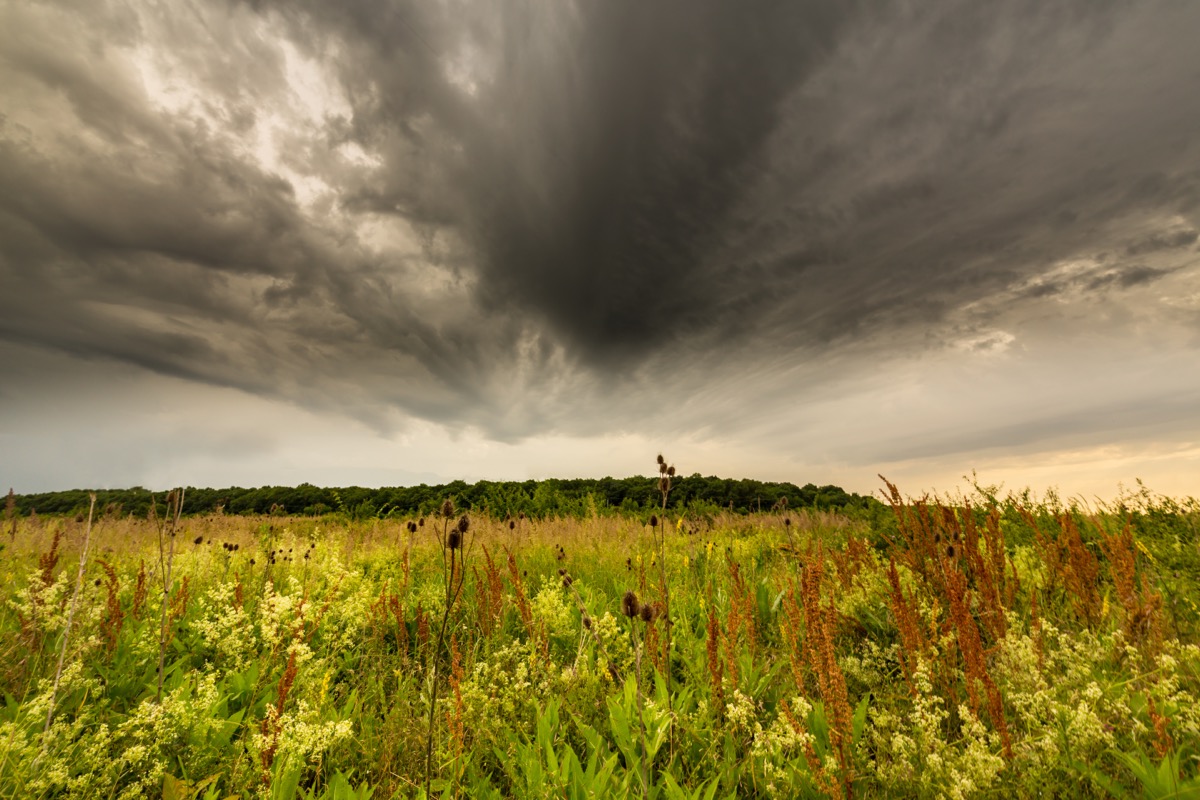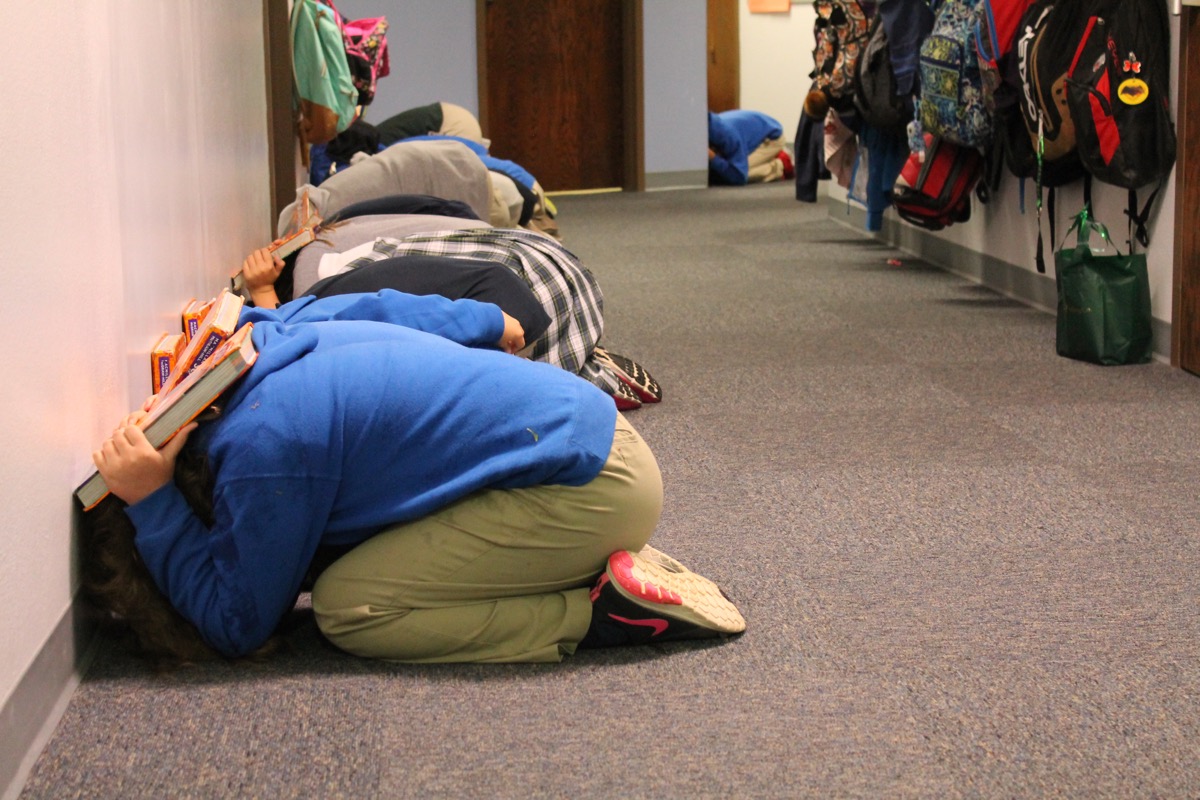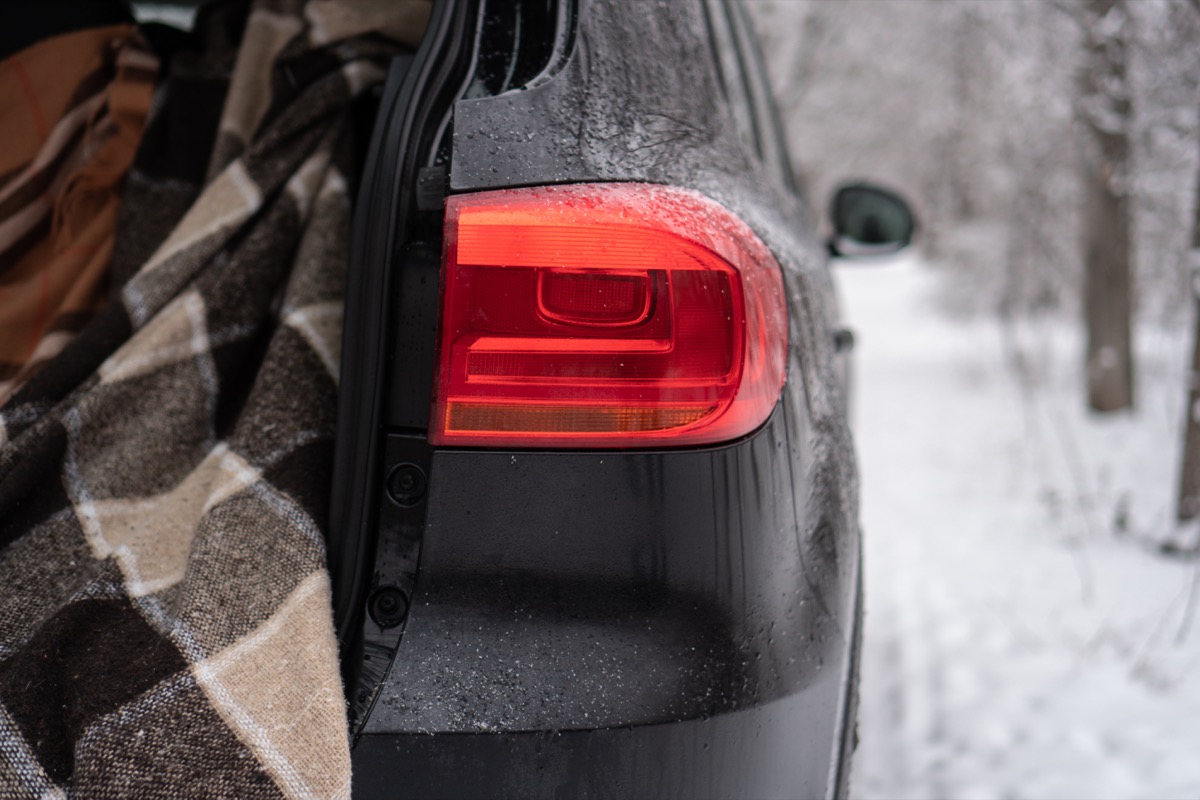If You See This While Driving, Never Turn Around, CDC Says

Warm weather and summer Fridays have once again given way to people packing the car and hitting the road for weekend getaways. And while the combination of busy roads and impatient drivers can make those trips seem particularly perilous, there’s one surprising danger on the roads this summer that experts want you to be aware of—but if you see it, you shouldn’t turn around. Read on to find out what experts say you should be prepared for when driving this summer, and what to do if you encounter it.
RELATED: If You See This While Driving, Turn Around Immediately, CDC Says.
If you see a tornado approaching, never turn around.

It’s only natural that you might instinctively think to run from a tornado—after all, they are the second deadliest weather condition after heat, according to the National Weather Service.
However, according to the Centers for Disease Control and Prevention (CDC), trying to outrun a tornado is almost always a bad decision. “The last place you want to be in a tornado is in a motor vehicle,” says the CDC. “Cars, buses and trucks are easily tossed by tornado winds.”
For the latest health and safety news delivered straight to your inbox, sign up for our daily newsletter!
Funnel clouds aren’t the only visible or audible signs of tornadoes.

While funnel clouds are what many people think of when they imagine tornadoes, those iconic weather formations aren’t the only sign a serious storm is approaching.
According to the CDC, dark or green skies; large hail; sizeable dark clouds that float lower than normal ones; and “a loud roar that sounds like a freight train” can all be signs of a tornado approaching, as well.
If a tornado is approaching, get inside a building as soon as possible.

If a tornado is approaching, the CDC recommends stopping your car and taking shelter inside the nearest building you can get to safely, while remaining as low to the ground as possible. However, the CDC warns that mobile homes are not safe during storms, so it’s wise to find a home that’s on a fixed foundation to take shelter inside instead.
Since cars can also be easily lifted during storms, the CDC cautions against trying to take cover under a car or other vehicle, or trying to shelter in your car under a bridge or overpass.
Once inside, take cover.

Once you have found an appropriate building in which to shelter, get into a room on the lowest floor—ideally one that does not have windows. Once in this room, the CDC recommends getting under something heavy, like a table or workbench, protecting your head with whatever is available, and covering your body with blankets or other available materials to prevent against injury.
If you can’t make it to a building, there are still options.

Of course, there may be occasions in which you simply don’t have time to get inside before a tornado hits. If that happens, there are ways you can potentially protect yourself. According to the National Weather Service, if you want to give yourself the best chance of survival, “abandon your car and seek shelter in a low lying area such as a ditch or ravine.”
If you do choose to stay inside your car, the CDC recommends using your arms to cover your head and neck and protecting your body with a heavy item of clothing or blanket if you have either available to you.